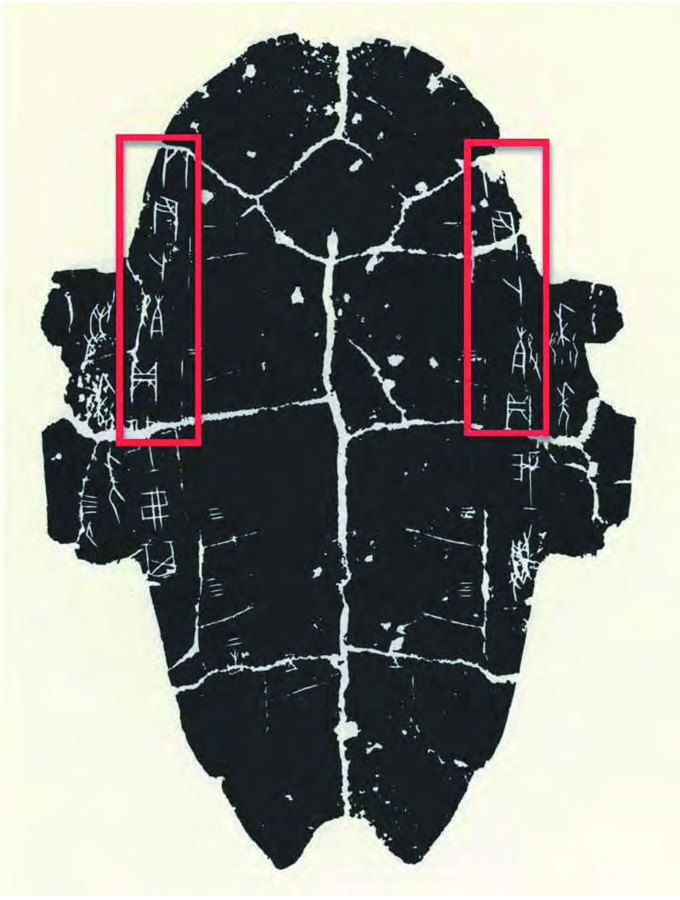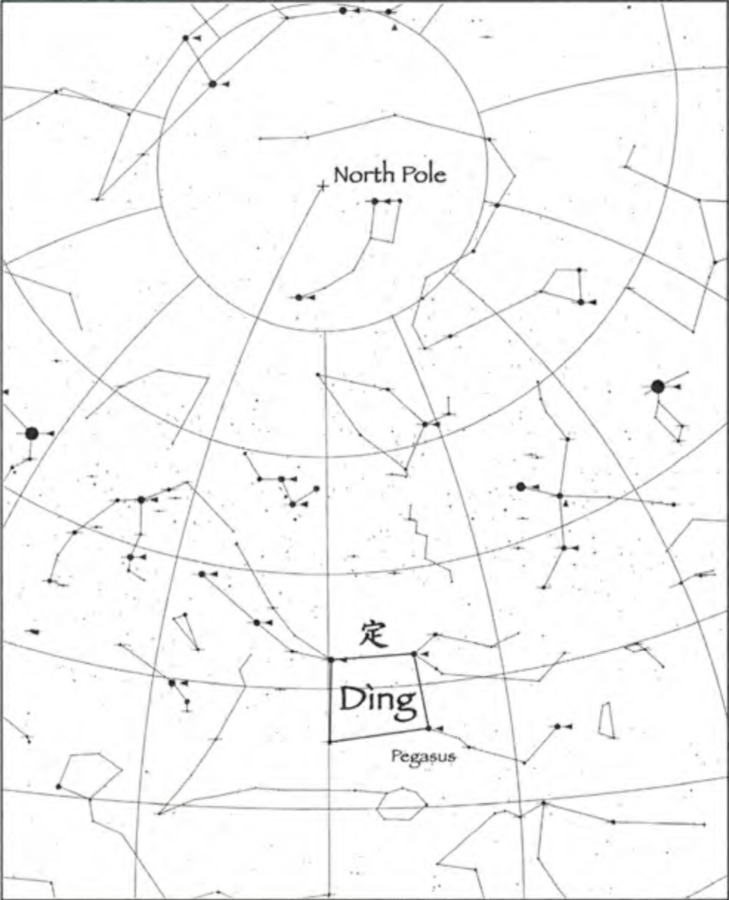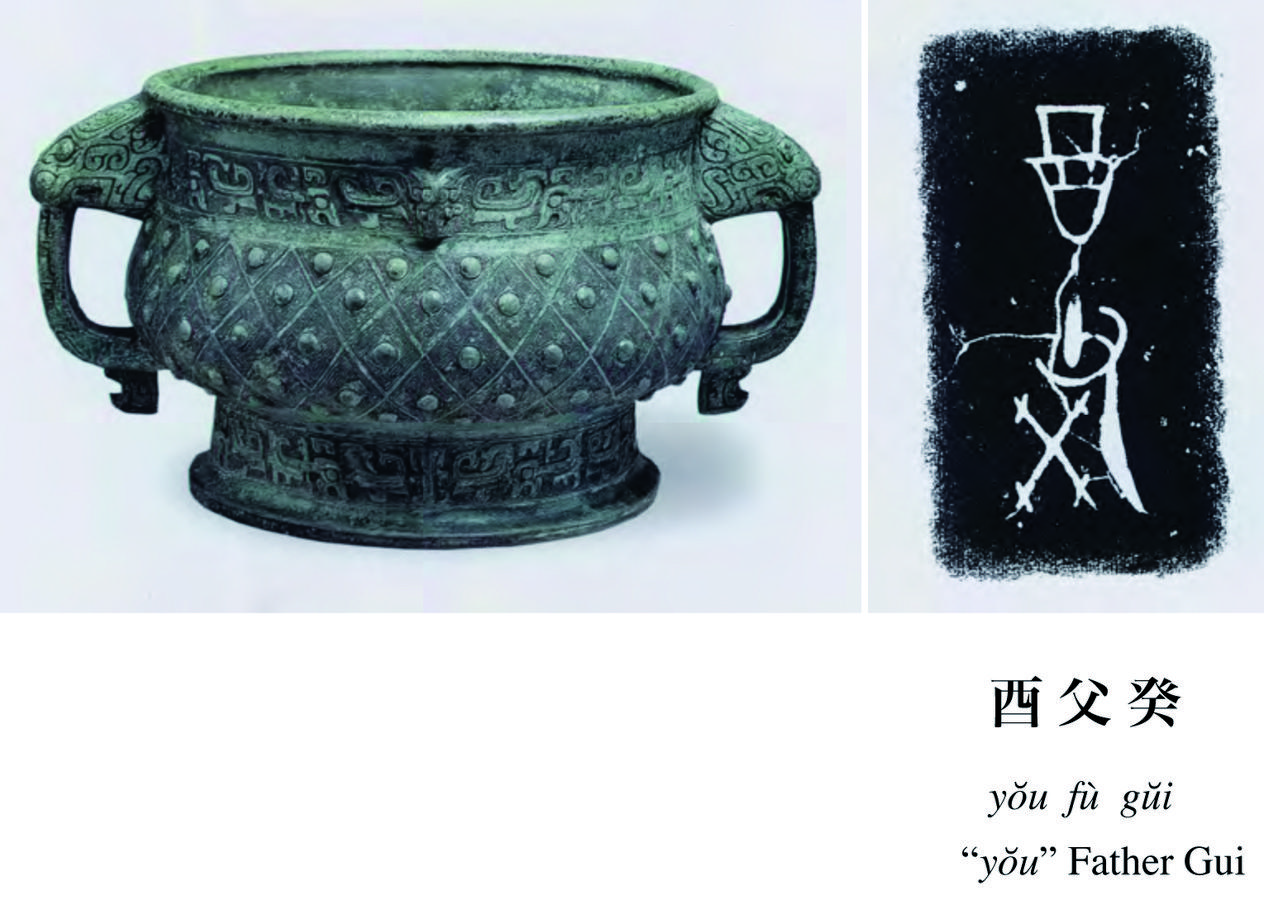In early 1999 the University of Pennsylvania hosted a conference on the topic of how writing systems originate. I had the good fortune to meet Peter at that meeting for the first time and to talk with him at length about how to approach the question of the origin of writing. This was where Peter first presented his paper on the origin of writing as a problem of historical epistemology (Damerow 2006). As is well known, the central point of that paper was that we should look for evidence of pre-writing graphic notational systems, and what functions they served and what functions they did not adequately serve, as a possible source-context out of which glottographic writing arose. As is also well known, this thesis is the result of the extensive work that Peter did with Bob Englund and Hans Nissen in the 1980s on the proto-cuneiform texts (Nissen, Damerow, and Englund 1993). At about the same time Günter Dreyer published materials that he had excavated and analyzed from the U-j tomb at Abydos in upper Egypt (Dreyer 1998). These included a large number of objects with clearly discernible signs, some pictographic, some abstract (often suggesting a kind of numeracy), most recurring in the corpus, but not known from Egyptian hieroglyphic writing proper. Although these materials themselves probably do not pre-date the earliest glottographic Egyptian writing, all the same they are distinct from the recognized Egyptian writing system and seem instead to represent grosso modo the kind of precursor graphic notational system for Egyptian writing that the proto-cuneiform texts do for Mesopotamian writing. In this respect they are sometimes called proto-hieroglyphic texts.
The third place in the ancient world where writing arose independently of any already existing writing system is of course China, where writing first appeared about two millennia later than in Mesopotamia or Egypt. With all due respect to Peter’s enduring wish to be able to explain the emergence of writing in human civilization as a one-time occurrence and thus to find a way to account for Chinese writing through some remote influence from the Ancient Near East, I have to acknowledge that there is not a shred of evidence for anything other than the independent invention of writing in China. What makes this particularly tantalizing is that there is also not a shred of archaeological evidence for any pre-writing graphic notational system or even any rudimentary notational scheme out of which Chinese writing might have arisen, comparable to the proto-cuneiform or proto-hieroglyphic materials of Mesopotamia and Egypt.
There is one curious feature of the earliest attested written Chinese texts that suggests a link with a pre-glottographic notational system. This is the set of twenty-two signs of the Chinese sexagenary cycle. (Tab. 5.1) These signs are not known in any form or context prior to their occurrence in the earliest extant texts written in Chinese, the so-called “oracle bone” inscription materials of the late Shang state, ca. 1200 BCE, so sensu stricto they do not constitute a pre-glottographic notational system. But they appear already as a fully functioning ordinal counting system in the earliest known Chinese texts, and their use there is distinctive enough to raise at least the question of a pre-writing existence.
The twenty-two signs are listed in table one in both their Shang period graphic guise and as modern Chinese characters. They are divided into two groups, group A of ten signs called “celestial stems” (tiān gān 天干), and group B of twelve signs called “terrestrial branches” (dì zhī 地支). Calling them “stems” and “branches” is a tradition based on mythological associations that have been secondarily imposed on the set at a time much later than their Shang inscriptional use, and has, as far as we know, nothing to do with the original meaning or function of the signs. In this later tradition the ten “stems” are conventionally correlated systematically with the five primary colors (‘red’ chì 赤, ‘black’ hēi 黑, ‘yellow’ huáng 黃, ‘white’ bái 白, ‘blue-green-grey’ qīng 青), the five traditional “natural agents” (‘fire’ huŏ 火, ‘water’ shŭi 水, ‘earth’ tŭ 土, ‘metal’ jīn 金, ‘wood’ mù 木) and with several other traditional “fives.” The twelve “branches” are the signs that are associated with the animals of the so-called Chinese zodiac. There is no evidence that these signs had any of these meanings or correlative associations much earlier than the beginning of the unified Chinese empire in 221 BCE, about a thousand years after their first use as seen in the earliest written texts. For the first millennium of their orthographic life they had no meaning at all beyond their function as ordinal counters. Because they are a part of the glottographic writing system, they have pronunciations, but those pronunciations are not known as words in the Shang language apart from being the names of these twenty-two signs. To be sure, some of these signs come to be used to write free words in later stages of the language, e.g., 甲 jiă ‘squama’ and the aspectual negative 未 wèi ‘not yet,’ but these lexical identifications do not pertain to their earliest usage in the language of the Shang inscriptions.
The two groups are used together in a dual-cyclical way, pairing one graph from the “stem” group with one from the “branch” group in strict cyclical order, to wit, (01 - 01), (02 - 02), (03 - 03), ...(10 - 10), (01 - 11), (02 - 12), (03 - 01), (04 - 02), (05 - 03), ...(10 - 12). This gives a set of sixty distinct two-character pairings. (Tab. 5.2) The sixty pairs in this cycle can be used to keep track of anything; it is a simple counting system. In the Shang divinatory inscription texts, the earliest Chinese texts of any kind extant or known, this system is used exclusively to keep track of days, predominantly as a part of a formulaic text line specifying when a particular divinatory ceremony was performed. Transcribed in modern script the formulaic use looks like this, for example:
丙 辰卜貞 [plastron-] cracking on the (03-05) [= 53rd] day [of the cycle], the diviner Gu ascertaining [a response to the proposition]: ... (See fig. 5.1; the text line occurs written vertically at the top left and again at the top right, marked with a red box.)
The set of ten “celestial stems” is also used in contemporaneous ceremonial Shang bronze inscriptions to refer posthumously to royal ancestors. That use is much less systematic than the pairings that we find used to track days, and its basis is not well understood, but it is all the same clearly intended to refer in an ordered way to the past generations of the royal clan (figs. 5.2, 5.3).
There are three reasons to look upon this graphic two-part cyclical counting system as possibly having something to do with a pre-glottographic notational system and perhaps with the origin of Chinese writing.
(1)All graphs in the Shang writing system have both a pronunciation and a meaning. Expressed in formal feature terms this means that they are always +P, +S. Although the graphs of the “celestial stems” and “terrestrial branches” set have pronunciations, that is, formally they are +P, their only meaning is as ordinal “counters” in the sexagenary cycle counting system as described above. Their function in this counting system is not dependent on pronunciations. Unlike graphs that stand for words, and are therefore inherently +P by definition, the P value of these graphs is not essential to their effective use as counters. It is likely, of course, that if the set of twenty-two graphs existed as a pre-glottographic notational system, functioning as an ordinal counting device, there would have been conventional ways to verbalize them.1 But the individual graphs may have become phoneticized as glottographic writing only when the sexagenary counting scheme became a part of some kind of oral performance, perhaps the oral divination ceremony, perhaps something else, and when this had to be recorded in written form. They would then have been adapted to the written Shang language when a written record of the event was produced.
(2)Most Shang graphs, once the word that they write is known, can be seen in one way or another to have an iconically identifiable, or at least suggestive, origin. The graphs of the sexagenary cycle, because they have no intrinsic meaning beyond serving as units in a counting system, cannot be explained as iconic in any objective sense (though see below re the graph 丁 / 
(3)In very general terms, allowing that Peter’s premise regarding the primacy of graphic notational systems for counting or measuring purposes prior to the emergence of glottographic writing per se is applicable beyond the confines of the Mesopotamian ecumene, a set of graphs that is primarily designed to serve as a counting mechanism is in principle entirely feasible as a precursor to glottographic writing.
While we must acknowledge that at present there is no archaeological evidence for the existence, much less the notational use, of these graphs prior to their appearance in the earliest known written Chinese texts, there may be astronomical clues to the existence of at least one of these graphs prior to the emergence of glottographic writing in China. David Pankenier has proposed that the counting function of the twenty-two graphs was in origin explicitly and exclusively calendrical, that is, astronomical, and that the fourth of the “stems” set, the graph 丁, modern Chinese dīng, Old Chinese *tteng, iconically represents in its original graphic form (
for the fourth of the celestial stems 丁 dīng, then has an iconic origin in the dìng asterism. The archaeological evidence for the astronomical observations associated with using the dìng asterism as a guide to human activities predates the emergence of glottographic writing in China by several centuries. This allows for the possibility that the graph

had a notational significance well before it became a part of the regular Shang writing system. If this speculation turns out to be correct, it would mean that writing in China, instead of originating in an accountancy context, as it seems to have in Mesopotamia and perhaps in Egypt, arose in an astronomical and calendrical context and would thus be reminiscent of early Mesoamerican writing. This, together with the fact that a dual-cyclical sexagenary counting system, albeit extending to numbers far larger than sixty, occupies a central position in early Maya calendrical texts, bespeaks a similarity between Chinese and Maya that Peter was eager to embrace for its monogenetic suggestiveness.


 貞 [plastron-] cracking on the (03-05) [53rd] day [of the cycle], the diviner Gu ascertained [a response to the proposition]: ...
貞 [plastron-] cracking on the (03-05) [53rd] day [of the cycle], the diviner Gu ascertained [a response to the proposition]: ...Fig. 5.1: 丙 辰 貞 [plastron-] cracking on the (03-05) [53rd] day [of the cycle], the diviner Gu ascertained [a response to the proposition]: ...
貞 [plastron-] cracking on the (03-05) [53rd] day [of the cycle], the diviner Gu ascertained [a response to the proposition]: ...
| A. Celestial Stems: Tiān gān 天干 | ||||||
| (01 |  |
甲 | jiă | dendro-glaucescent | ||
| (02 |  |
乙 | yĭ | dendro-glaucicant | ||
| (03 |  |
丙 | bĭng | flammi-rubescent | ||
| (04 |  |
丁 | dīng | flammi-rubicant | ||
| (05 |  |
戊 | wù | terri-flavescent | ||
| (06 |  |
己 | jĭ | terri-flavicant | ||
| (07 |  |
庚 | gēng | metallo-can(d)escent | ||
| (08 |  |
辛 | xīn | metallo-can(d)icant | ||
| (09 |  |
壬 | rén | aqui-nigrescent | ||
| (10 |  |
癸 | gŭi | aqui-nigricant | ||
| B. Terrestrial branches Dì zhī 地支 | ||||||
| 01) |  |
子 | zĭ | murine | 00 | North |
| 02) |  |
丑 | chŏu | bovine | 02 | |
| 03) |  |
寅 | yín | tigridine | 04 | |
| 04) |  |
卯 | măo | leporine | 06 | East |
| 05) |  |
辰 | chén | dracontine | 08 | |
| 06) |  |
巳 | sì | anguine | 10 | |
| 07) |  |
午 | wŭ | equine | 12 | South |
| 08) |  |
未 | wèi | ovine | 14 | |
| 09) |  |
申 | shēn | simiine | 16 | |
| 10) |  |
酉 | yŏu | galline | 18 | West |
| 11) |  |
戌 | xū | canine | 20 | |
| 12) |  |
亥 | hài | porcine | 22 | |
1-甲 |
2-乙 |
3-丙 |
4-丁 |
5-戊 |
6-己 |
7-庚 |
8-辛 |
9-壬 |
10-癸 |
|
子-1 |
(01-01) 1 |
(03-01) 13 |
(05-01) 25 |
(07-01) 37 |
(09-01) 49 |
|||||
丑-2 |
(02-02) 2 |
(04-02) 14 |
(06-02) 26 |
(08-02) 38 |
(10-02) 50 |
|||||
寅-3 |
(01-03) 51 |
(03-03) 3 |
(05-03) 15 |
(07-03) 27 |
(09-03) 39 |
|||||
卯-4 |
(02-04) 52 |
(04-04) 4 |
(06-04) 16 |
(08-04) 28 |
(10-04) 40 |
|||||
辰-5 |
(01-05) 41 |
(03-05) 53 |
(05-05) 5 |
(07-05) 17 |
(09-05) 29 |
|||||
巳-6 |
(02-06) 42 |
(04-06) 54 |
(06-06) 6 |
(08-06) 18 |
(10-06) 30 |
|||||
午-7 |
(01-07) 31 |
(03-07) 43 |
(05-07) 55 |
(07-07) 7 |
(09-07) 19 |
|||||
未-8 |
(02-08) 32 |
(04-08) 44 |
(06-08) 56 |
(08-08) 8 |
(10-08) 20 |
|||||
申-9 |
(01-09) 21 |
(03-09) 33 |
(05-09) 45 |
(07-09) 57 |
(09-09) 9 |
|||||
酉-10 |
(02-10) 22 |
(04-10) 34 |
(06-10) 46 |
(08-10) 58 |
(10-10) 10 |
|||||
戌-11 |
(01-11) 11 |
(03-11) 23 |
(05-11) 35 |
(07-11) 47 |
(09-11) 59 |
|||||
亥-12 |
(02-12) 12 |
(04-12) 24 |
(06-12) 36 |
(08-12) 48 |
(10-12) 60 |

Fig. 5.4: Position of the 定 dìng asterism as viewed from Luoyang ca. 650 BCE (from Pankenier 2011, 40).
References
Chen, Peifen (1995). Ancient Chinese Bronzes in the Shanghai Museum. London: Scala Books.
Damerow, Peter (2006). The Origins of Writing as a Problem of Historical Epistemology. Cuneiform Digital Library Journal 1.
Dreyer, Günter (1998). Umm el-Qaab I: Das prädynastische Königsgrab U-j und seine frühen Schriftzeugnisse. Mainz: Phillipp von Zabern.
Hyman, Malcolm (2006). Of Glyphs and Glottography. Language and Communication 26:231–249.
Nissen, Hans J., Peter Damerow, and Robert K. Englund (1993). Archaic Bookkeeping: Early Writing and Techniques of Economic Administration in the Ancient Near East. Chicago: University of Chicago Press.
Pankenier, David (2011). Getting ‘Right’ with Heaven and the Origins of Writing in China. In: Writing and Literacy in Early China. Ed. by David P. Branner and Li Feng. Seattle, London: University of Washington Press, 19–50.


